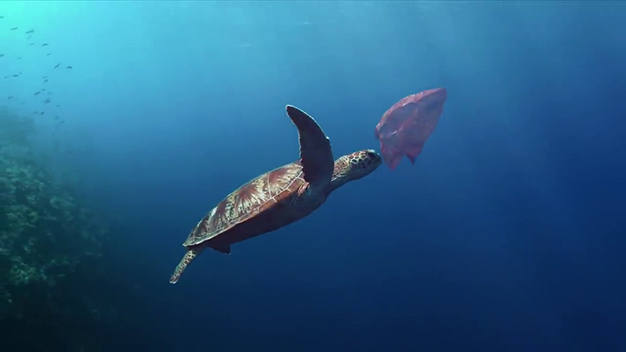VICE was a magazine with a cult following when a transformative chat with director Spike Jonze inspired their founders to plunge into the world of video. Their audience expanded exponentially as fans spread their video content across the internet. Soon VICE's documentaries were being screened at international film festivals, and CNN and HBO wanted to collaborate on TV projects. Brands also came calling. As part of our Engagement Project series, we sat down with VICE co-founder and CEO Shane Smith to talk about breaking convention, making killer content and engaging the right audience.
The media is going through turbulent times, but Shane Smith makes it look like a joyride. Smith is the co-founder and CEO of VICE, the global youth media company and an industry leader in producing and distributing some of the best original video on the web. Launched in 1994 as a “punk zine,” VICE has transformed into a multimedia brand valued by Forbes at $1 billion, and includes a network of digital channels — including a robust YouTube channel, a television production studio, a magazine, an in-house creative services agency, and a book-publishing division. VICE most recently partnered with HBO and Bill Maher to produce the series, VICE, hosted by Smith. Smith recently shared his thoughts on engagement, content and authenticity with us.
How did Vice grow as a brand? Who were you targeting and how did you go after them?
When we left Montreal and came down to New York, we were thrown in the deep end. We realized if we were going to try to go mass — like Rolling Stone or Spin — and try to go for a million copies, we were going to have to dilute how we wrote and how we did everything.
Instead, we decided to go after the 100,000 cool kids in Japan, then the UK, then Germany, and we got to a million copies that way — by focusing on finding the cool kids in each country. We didn’t have to dilute what we were doing. We consciously didn’t go mass, we went niche.
Is engagement a word you use?
Sure. Engagement, first of all, for us was finding out from magazine auditors that the pass-along rate for our magazine was six to eight. That means six to eight people would read one [copy of a] magazine. Those stats were crazy.
Then more engagement came when we started doing video online in 2006. Everyone was still talking about hits and we were penalized for putting videos online because everyone was looking at page views. No one was looking at “time on site.”
We were at about 30 minutes for average time on site. We didn’t follow any of the rules of putting up short, snackable content. We put up content we liked and we didn’t care how long it was. The first thing we put up was “Heavy Metal in Baghdad,” which eventually became a feature film that was an official selection at the Toronto and Berlin film festivals.
Now, we know engagement is the most important thing. Who cares about hits? Who cares about page views? You care about a user being engaged for a duration of time — not just to monetize, but because it’s a good user experience. They’re having fun watching your stuff. It could be on a phone, or it could be on YouTube, it could be on YouTube on a TV, anywhere — that’s all we care about. Engagement is just another way of saying people like your stuff.
We know engagement is the most important thing. Who cares about hits? Who cares about page views?
How is engaging people online different from what you do in print or on TV?
What we learned was it took ten years to get to a million copies of the magazine and it took us one year to get to 10 million views. We realized the scale that you can have online is exponentially bigger than traditional media.
TV, no matter what anyone says, is still a shotgun approach. Even the ratings are problematic because it’s a flawed science — if it’s a science at all. Whereas online metrics are, if not inviolate, then at least believable. Advertising is waking up to that fact. You can have a lot more information about your audience than you can ever have on TV, or outdoor, or radio, or traditional things. I’m a magazine guy and don’t get me wrong, I love magazines. But if you’re an advertiser, where would you rather advertise: online where you have an interaction with the audience and you know all kinds of information about that person and you develop a relationship? Or an ad somewhere that you hope someone will see and you hope will lead to some sort of transaction?
The future of advertising is going to be a huge migration from traditional media to online. What we’ve learned is just make the content as good as you possibly can. People will watch it and you can scale it up globally.
Are there ways you’ve been able to learn from those online insights and do things better?
Vice has come to be known for our “Gun Markets in Karachi,” or The Vice Guide to North Korea or Liberia. Stuff like that has caught the attention of mainstream news. But Vice used to be the antithesis of news. We were a lifestyle mag, or a lad mag even. It was only through our expansion that we started doing news. People said “Why don’t you make your kind of news around the world?”
That was a big wakeup call and that was 100 percent due to our audience saying, “We want more of this.” So we wanted to make more of that and it ended up being perfect. Now it’s taken on a life of its own.
A lot of brands seek authenticity. Is the internet the main place you find it?
The internet is much more democratic. If people don’t like something, they won’t watch it, they won’t click it. With TV, you can ram things down people’s throats. If you put something on at 9 p.m. on a Thursday, people are going to watch it — even if it’s a piece of crap.
The internet’s definitely harsher and people are a lot more honest with their praise and their criticism. Something we’ve noticed over the past few years is a sort of nice-ification of the internet. It used to be everyone — even us, VICE — being prickly and snide. Comments were all “holier than thou.” It was like the comments on the internet were run by the comic book guy on The Simpsons: snide, bored, “over it.”
Now, the comments are becoming more positive. People are being constructive because they realize their comments are being incorporated into how things are run and how different content is being put online. That’s a huge leap forward for the internet because the content is getting better, the platforms are getting better. People know they are being listened to, people understand their responsibility as an audience.
What’s your advice for how brands can engage people, particularly young people?
Gen Y has been marketed to since they were two. They have very sophisticated BS sensors. The only way around those sensors is not to BS.
They get it. They understand ads make magazines possible, make online possible, make TV possible, make radio possible. So why don’t you be smart about it? Why don’t you create long tail media assets that people like? For example, if you bring people a Spike Jonze movie and it says this is made possible by Intel, people get it. You don’t have to have product placement, you don't have to have commercials. They get it. You brought me something by someone I like. Thanks Intel, I get it. You get me. That’s cool.
A lot more brands now are waking up to the fact that for the same price as activating a 30-second spot, you can create a long tail media asset on the internet that — for years — will actually develop an audience, who will tune into that every day.
Engagement is only possible now because brands are waking up to the fact they can engage with their consumers in a meaningful way. And that doesn’t come through a 30-second spot. That doesn’t come through a radio ad. It doesn’t come through outdoor billboards. It comes through creating content your audience enjoys.






